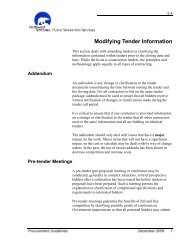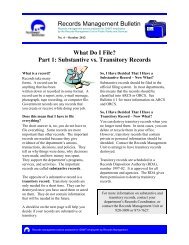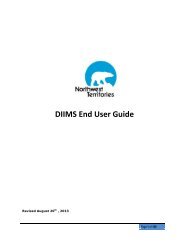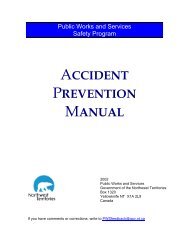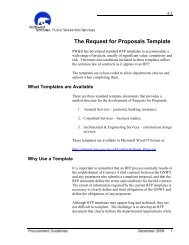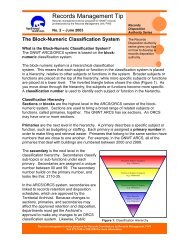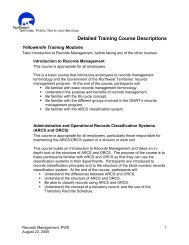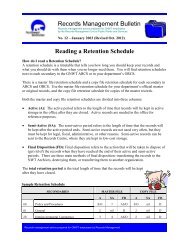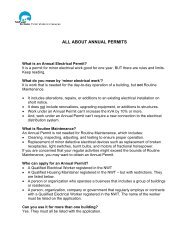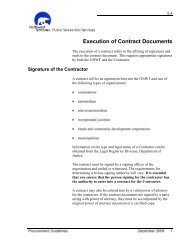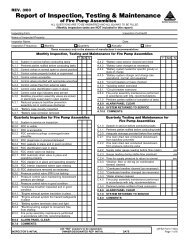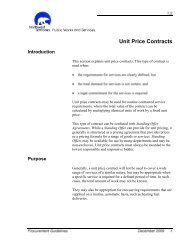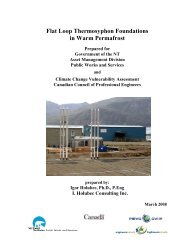Good Engineering Practice for Northern Water and Sewer Systems
Good Engineering Practice for Northern Water and Sewer Systems
Good Engineering Practice for Northern Water and Sewer Systems
You also want an ePaper? Increase the reach of your titles
YUMPU automatically turns print PDFs into web optimized ePapers that Google loves.
1.0 GENERAL UTILITY OBJECTIVES<br />
The primary objective of <strong>Good</strong> <strong>Engineering</strong> <strong>Practice</strong> <strong>for</strong> <strong>Northern</strong> <strong>Water</strong> <strong>and</strong> <strong>Sewer</strong> <strong>Systems</strong><br />
(GEP) is to provide a technical reference guidebook to help builders produce the best value in<br />
their respective utilities <strong>for</strong> the North. Utilities should be designed specifically <strong>for</strong> the northern<br />
climate <strong>and</strong> other physical parameters of the site, as well as to minimize the overall capital costs<br />
plus the life cycle operating <strong>and</strong> maintenance costs. The objective is to encourage improvement<br />
over time, based on proven methods <strong>and</strong> materials, while supporting improved utility per<strong>for</strong>mance<br />
<strong>and</strong> new technology.<br />
1.1 GENERAL GOALS AND PRINCIPLES<br />
The goals <strong>and</strong> principles governing utilities design in the North include:<br />
• Protecting public health <strong>and</strong> safety;<br />
• Protecting the environment;<br />
• Effectiveness <strong>and</strong> efficiency;<br />
• Community acceptance;<br />
• Compliance with all relevant legislation <strong>and</strong> regulations; <strong>and</strong><br />
• Following accepted good engineering practices.<br />
1.2 USE OF LOCAL RESOURCES<br />
1.2.1 General<br />
Promoting <strong>and</strong> actively assisting communities to take on greater responsibility <strong>for</strong> their economic<br />
<strong>and</strong> social well-being is an important objective of the GNWT. Construction projects provide<br />
important opportunities <strong>for</strong> communities to become involved in their own development.<br />
1.2.2 Local Knowledge<br />
Residents of a community can provide valuable in<strong>for</strong>mation related to site conditions such as<br />
snowdrifting patterns, preferred orientations, anticipated use patterns <strong>and</strong> examples of successful<br />
materials or methods.<br />
1.2.3 Local Labour<br />
To maximize local involvement, materials <strong>and</strong> methods used in utilities construction should be<br />
suitable <strong>for</strong> broad application that will enable training applicable to future projects. To work<br />
towards achieving maximum local involvement, avoid the use of specialized products or<br />
installations.<br />
1.2.4 Local Equipment<br />
The use of local equipment benefits the community <strong>and</strong> can reduce construction costs, as bringing<br />
equipment into most remote communities is extremely expensive. Utility design <strong>and</strong> construction<br />
methods should be suitable <strong>for</strong> available equipment.<br />
GOOD ENGINEERING PRACTICES 1-1 Apr-04<br />
General Utility Objectives



